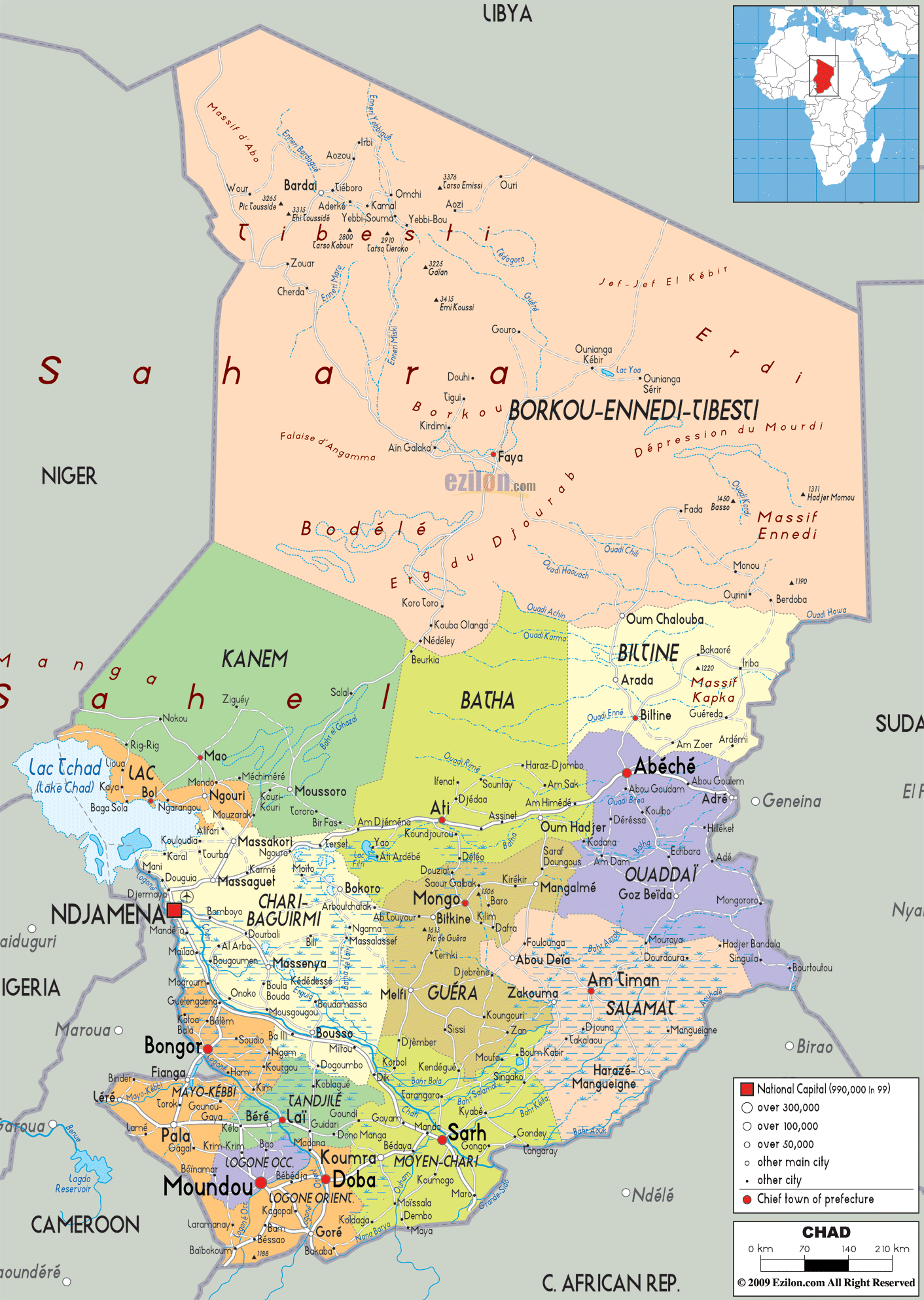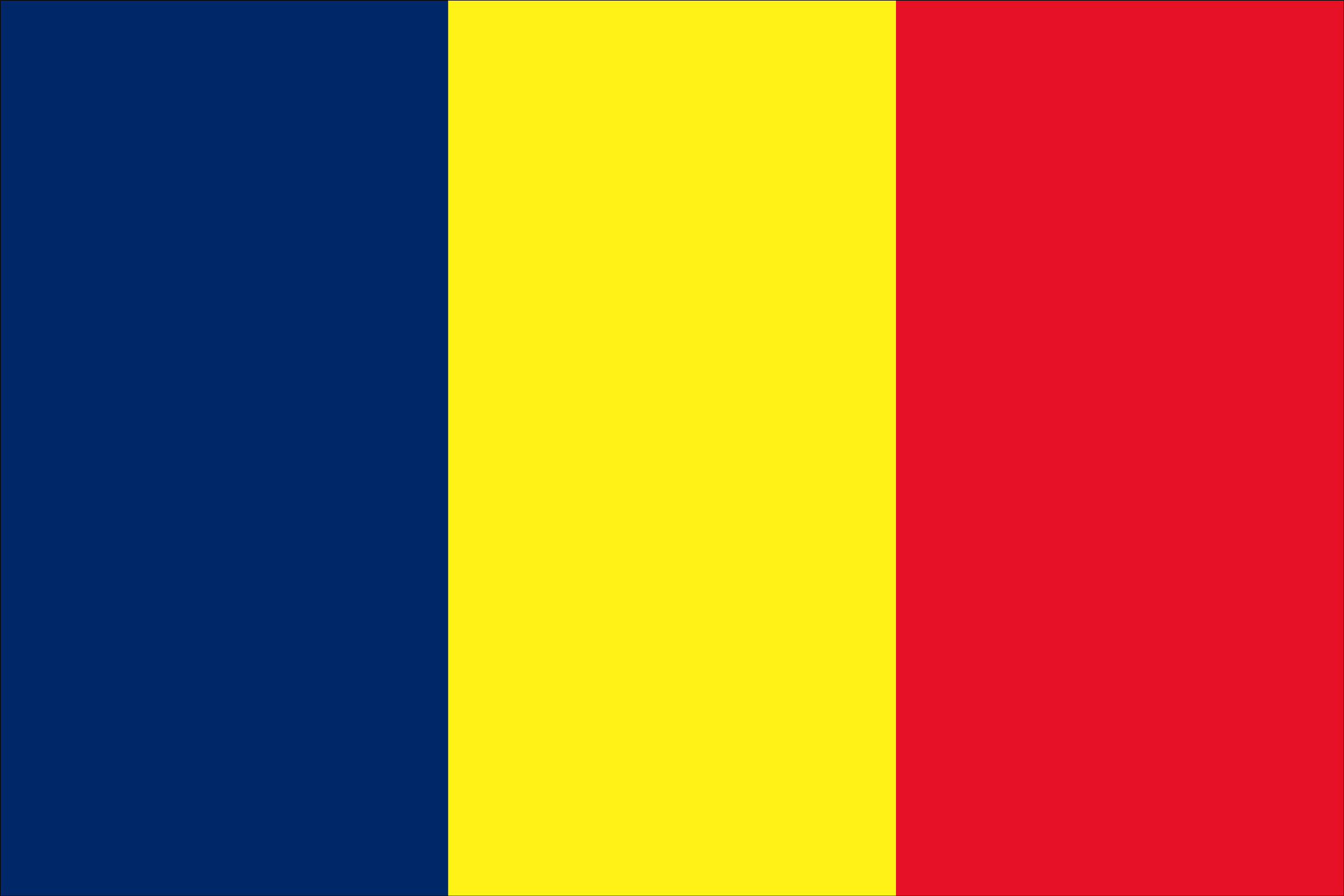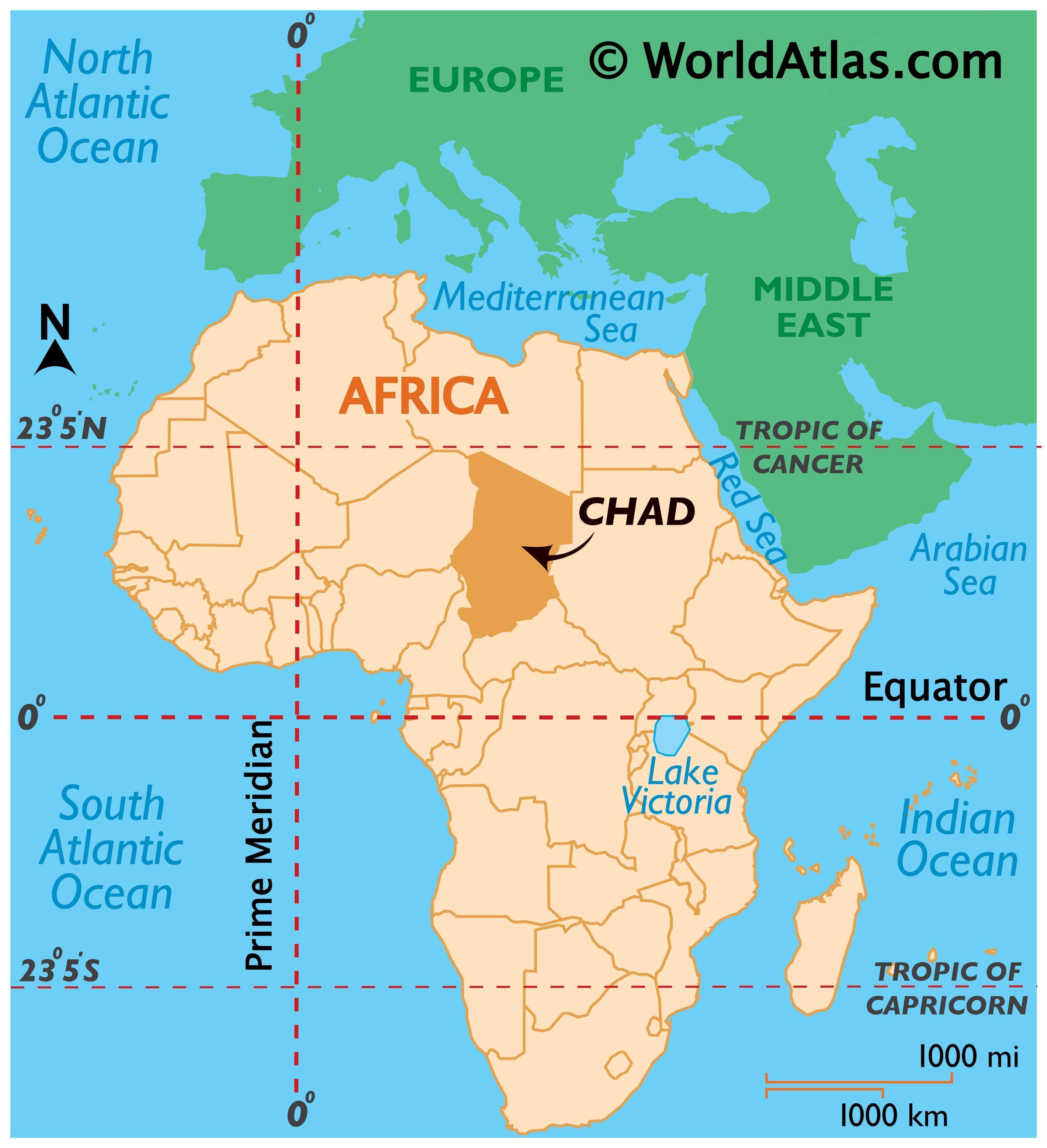AI-Generated Article
This content has been automatically generated using artificial intelligence technology. While we strive for accuracy, please verify important information independently.
When you hear the name Chad, you might picture a vast country in the middle of Africa, a place where many different paths meet, a real junction point for the continent. It is, in fact, an area of land that does not have a direct path to the sea, sitting right at the intersection of Africa's northern and central parts. This location, you know, makes it a spot where various influences and ways of life come together, a little like a grand gathering place for cultures and natural wonders. It shares its edges with a few other nations, too, almost like a puzzle piece fitting neatly among its neighbors, including Libya to the north and Sudan over to the east, along with the Central African Republic further south. This geographical setup gives it a unique character, a sort of quiet presence in a busy part of the world, quite honestly.
The very shape of the land in this country is that of a gentle dip, almost like a wide, shallow bowl, which then ascends in a slow, gentle incline from the area around Lake Chad in the western part. This whole formation is then encircled by high, natural barriers, giving it a distinct physical outline. It’s a place, you see, that presents a particular kind of natural beauty, with its gradual slopes and its surrounding elevated terrain. We are going to look closely at this nation, pulling details from available descriptions to get a clearer picture of what makes it what it is, and perhaps, how a phrase like "Chad Faust" might help us think about its different aspects, in a way.
This exploration will touch upon the country's physical features, its vibrant animal life, and some of the ways its people live together. We will also consider its recent history regarding its form of governance and the many different groups of people who call it home. It's really about getting a better grasp of a place that, in some respects, serves as a significant connector for many different parts of the African continent, a truly important spot on the map, actually. So, let's take a closer look at this fascinating nation.
Table of Contents
- Unpacking Chad: A Geographic Glimpse
- Where Does Chad Faust Fit on the Map?
- What Makes Chad's Wildlife So Special?
- The Richness Beyond the Chad Faust Name
- A Look at Chad's Political Scene
- How Does Chad Faust's Political Journey Unfold?
- Chad's Cultural Mosaic
- Can Chad Faust Help Us See Its Diverse Peoples?
Unpacking Chad: A Geographic Glimpse
Chad, which is formally recognized as the Republic of Chad, is a country that finds itself without any direct access to the ocean. It is positioned at a very important meeting point for the northern and central parts of the African continent, a sort of central hub for the region. This particular spot means it shares its boundaries with a number of other nations, which include Libya toward the north, Sudan to the east, and the Central African Republic to its south. It also has shared edges with Cameroon in the southwest and Niger to the west, and you know, the presence of Lake Chad in the west also suggests a connection to Nigeria, too, given the lake’s broad reach. The way the land is shaped here is quite unique; it forms a gentle dip, almost like a wide, shallow bowl, that slowly ascends from the region around Lake Chad in the west. This entire area is then surrounded by a series of high, natural barriers, giving the country a rather distinct physical outline. It’s a place that, in some respects, feels very contained by its own natural borders, yet it serves as a critical connection point for many neighboring areas, that is.
This country, despite its truly vast overall dimensions, apparently has a comparatively small number of people living within its boundaries. This means there is a great deal of open space, and the natural environment can truly thrive without too much human pressure in many areas. The very geography of the place, with its gradual slopes and the elevated terrain that encircles it, helps to shape the daily existence of the people who live there, as well as the different kinds of animals that make it their dwelling place. It’s a land that, in a way, feels quite ancient and untouched in many parts, holding onto its natural characteristics with a quiet strength. The lack of direct sea access, of course, influences its trade and its connections to the wider world, making its land routes and its relationships with its neighbors particularly important for its dealings, you know.
Where Does Chad Faust Fit on the Map?
When we think about where Chad sits on the grand map, the idea of "Chad Faust" might bring to mind the pivotal nature of this landlocked country. It is, in essence, a really important connection point between many different parts of the African continent. Imagine a vast network of roads and paths, and Chad is one of the central intersections, allowing for the movement of ideas, people, and goods between various regions. It shares its edges with Libya to the north, Sudan over to the east, and the Central African Republic in the south. Then, moving around its western side, it is bordered by Cameroon in the southwest, and Niger toward the west. This arrangement of shared boundaries makes it a truly significant player in regional interactions, providing pathways and connections for many diverse African areas, actually. The terrain, which forms a gentle dip that slowly rises from the Lake Chad region in the west and is then surrounded by mountains, gives it a very specific geographical identity. It’s a place that, quite literally, helps to link diverse landscapes and communities across a broad expanse of land, that is.
The very location of Chad, situated at the meeting point of North and Central Africa, means it has been influenced by many different historical currents and cultural exchanges. Its physical characteristics, like the presence of Lake Chad, a rather large and shallow body of water, and the high natural barriers that form its edges, have shaped its development and its connections with its neighbors. There is, in some respects, a sense of it being a gateway, a point of entry and exit for various movements across the continent. So, when we ask where a concept like "Chad Faust" might fit, it helps us consider the country’s role as a vital connector, a place where many different threads of African life come together, sort of, forming a larger picture. It’s a place that, by its very position, tells a story of interaction and shared existence, very truly.
What Makes Chad's Wildlife So Special?
The natural environment in Chad is truly something to behold, especially when it comes to the vast array of living creatures that make it their dwelling place. This country is a home for a remarkable number of different animal types, showcasing a really impressive range of life forms. For instance, it provides a habitat for 134 kinds of warm-blooded creatures that feed their young milk, and there are 141 different sorts of feathered animals that fly through its skies. You can also find 52 kinds of cold-blooded animals with scales, along with 30 creatures that live both on land and in water. And, too it's almost, its waters are filled with 130 different kinds of fish. This incredible variety means that Chad’s natural areas are bursting with activity, a real testament to the health of its ecosystems, in a way. It’s a place where you can see many fascinating animals, such as large, grey-skinned animals with long trunks, and those rather large, stout animals with short legs and thick skin that spend a lot of time in the water, along with heavy, thick-skinned animals with one or two horns on the nose, and those rough-skinned, pig-like creatures with tusks that live in the wild, you know.
The sheer number and diversity of these animals mean that Chad holds a very important position in the preservation of African wildlife. The various habitats, from the lake areas to the more elevated regions, provide suitable conditions for such a wide array of species to thrive. It’s a complex web of life, where each creature plays a part in the overall health of the environment. The presence of so many different types of animals, from the very large to the quite small, paints a picture of a natural world that is still very much intact and functioning. This richness in animal life contributes significantly to the country’s unique character and its value as a natural treasure, quite honestly. It’s a place where nature still holds a strong presence, and where many different forms of life coexist, very truly.
The Richness Beyond the Chad Faust Name
Beyond any specific name or concept like "Chad Faust," the actual country of Chad holds a deep and expansive natural wealth, particularly in its living creatures. The sheer number of different animal species that live there truly highlights the country’s rich biological diversity. Think about it: 134 different kinds of warm-blooded creatures that feed their young milk, 141 different sorts of feathered animals, 52 kinds of cold-blooded animals with scales, 30 creatures that live both on land and in water, and 130 kinds of fish. This isn't just a list; it’s a representation of a really complex and interconnected natural system. You can find large, grey-skinned animals with long trunks roaming, or those rather large, stout animals with short legs and thick skin enjoying the water, or even heavy, thick-skinned animals with horns, and rough-skinned, pig-like creatures with tusks. This abundance, you know, shows that the country’s various environments, from its dry areas to its water bodies, support a thriving natural world. It’s a place where the wild still maintains a powerful presence, and where many creatures find a safe home, in a way.
The presence of such a wide variety of animals also suggests that the ecosystems within Chad are, in many respects, still quite healthy and able to support a large population of different species. This natural richness is a significant part of the country’s identity, offering a glimpse into the broader natural heritage of the African continent. It’s a place where the sounds and movements of wild creatures are a constant part of the daily rhythm, contributing to a feeling of deep connection with the natural world. This aspect of Chad, with its impressive collection of living things, truly goes far beyond any simple label or name, revealing a truly vibrant and important part of our planet’s natural heritage, very truly.
A Look at Chad's Political Scene
In recent times, Chad has been a focal point for political changes in its part of Africa. It holds a particular distinction as the first among the countries in West and Central Africa where the military took control by force in recent years to then hold elections and work to bring back governance by the people. This move represents a really significant step in a region that has seen its share of political difficulties. However, some people who observe the situation express concerns with the election, suggesting that the process or the outcome might not be as straightforward or as fair as one might hope. This kind of situation, you know, often brings about a mix of hope for a more stable future and worries about the challenges that still remain. It’s a period of transition, a time when the country is attempting to move from one form of governance to another, and this process is often filled with various viewpoints and debates, that is.
The effort to bring back governance by the people after a period of military control is a complex undertaking, requiring careful management and a lot of cooperation from different groups within the country. The fact that Chad was the first to attempt this among its regional neighbors gives it a certain kind of prominence in the ongoing discussions about political stability and democratic progress in Africa. It means that many eyes are watching how this process unfolds, looking for lessons or warnings for other nations facing similar situations. The concerns raised by some observers are a reminder that such transitions are rarely simple and often involve many different perspectives on what truly constitutes a fair and just system of governance. It’s a dynamic situation, still developing, and its path forward will be watched closely by many, very truly.
How Does Chad Faust's Political Journey Unfold?
When we consider the political path of Chad, thinking of it through the lens of "Chad Faust" might help us appreciate its unique steps. This country, in a significant move, was the very first among the nations in West and Central Africa that had seen their military take control by force in recent years to then proceed with holding elections and trying to bring back governance by the people. This particular action marks a really important moment in its recent history, setting it apart from some of its neighbors who have experienced similar shifts in leadership. However, it's also true that some people who observe the situation express concerns regarding the election process itself, suggesting that there might be aspects that need closer examination or that do not fully meet the expectations for a completely open and fair contest. This means, you know, that while there is a clear movement towards civilian rule, the journey is not without its complexities and different viewpoints, in a way.
The process of shifting from military control back to a system where the people have a direct say in their governance is, quite naturally, a challenging one. It involves many different steps and often faces various obstacles. Chad’s experience as the first to try this path in its region makes its political journey particularly noteworthy. It serves as a kind of test case, showing what might be possible, but also highlighting the potential difficulties that can arise. The concerns voiced by some observers are a reminder that the path to a fully established civilian government is often a long one, filled with discussions and different opinions on how best to move forward. So, the question of how "Chad Faust" might unfold politically is really about watching a nation work through its own unique set of circumstances to find its way towards a more stable and representative form of leadership, very truly.
Chad's Cultural Mosaic
Chad is a country that people often call the “babel tower of the world,” and this nickname is given to it because of its truly amazing mix of different ways of life and groups of people. It is a place where you can find over 200 different groups of people, each with their own distinct customs and traditions. What’s even more striking is that the country proudly holds over a hundred different spoken forms of communication, making it a very rich environment for language and cultural expression. This incredible variety of peoples and tongues means that Chad is a place where many different stories, histories, and ways of seeing the world coexist side by side. It’s a living example of how different groups can share the same land while maintaining their unique identities, that is.
This rich cultural diversity is not just a statistic; it shapes the daily life, the celebrations, and the interactions among people throughout the country. Imagine a place where you can hear many different sounds of conversation, where various forms of art and music are practiced, and where food traditions differ
🖼️ Related Images



Quick AI Summary
This AI-generated article covers Chad Faust - Exploring A Central African Nation with comprehensive insights and detailed analysis. The content is designed to provide valuable information while maintaining readability and engagement.
Will Robel
✍️ Article Author
👨💻 Will Robel is a passionate writer and content creator who specializes in creating engaging and informative articles. With expertise in various topics, they bring valuable insights and practical knowledge to every piece of content.
📬 Follow Will Robel
Stay updated with the latest articles and insights